Renaissance and Humanistic Education
The Renaissance, derived from the French word "rebirth" is generally acknowledged as the period from the mid-fourteenth to the end of the sixteenth century. Some of the examples presented here, although also relevant to themes and ideas of the Renaissance, belong to the Age of Enlightenment and the Age of Reason of the seventeenth and eighteenth centuries. The period of the Renaissance witnessed a revival of classical texts and ideas from antiquity, and an intellectual revival of learning followed what is commonly refered to as the "Dark Ages."
The Humanism of the Renaissance gave birth to many innovations in the sciences and arts, as a time of scientific, philosophic, geographic, artistic, and linguistic expansion. As travel and mobility increased, so did new innovations and ideas. Education came to play a more vital role for the courts and their subjects as the race for colonies spread across the globe, opening up new horizons both geographic and intellectual.
Rulers began to take more of an interest in the purpose of training for apprenticeships and to develop the trades, leading to an increased interest in what we call vocational education. Scholars and the clergy were trained with more intent to fulfill their roles as advisors to the state, and as public and private servants serving in an increasing number of posts. Curricula and schools were developed and expanded to meet the increase in needs, and to accommodate the influx of new ideas, innovations, and discoveries.
Wither emblems (Chiron)
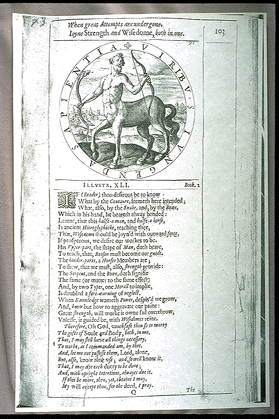
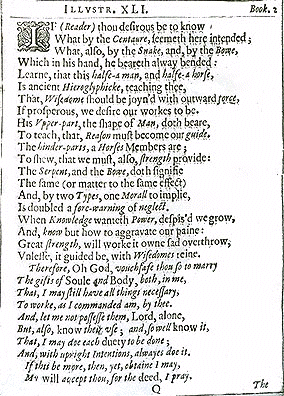
Figure 1. Wither, George (1588-1667). Collection
of Emblemes, Ancient and Modern: Quickened with Metricall
Illustrations; and, disposed into Lotteries, both Morall and
Divine. That Instruction, and Good Counsell, may bee
furthered by an Honest and Pleasant Recreation. [London,
Printed by Augustine Mathewes, 1634].
Fables, William Wilkie. "Young Lady and the Looking-glass"

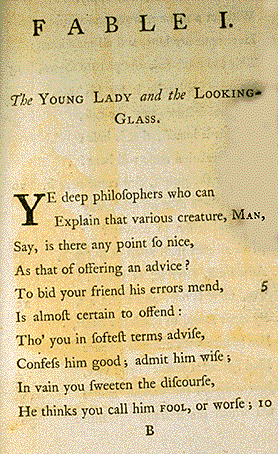
Figure 2. Wilkie, William (1721-1772). Fables. [London, Printed for E. and C. Dilly, 1768]. 'Young Lady and the Looking-Glass.'
William Wilkie was the son of a farmer named James Wilkie, and earned the nickname "the Scottish Homer" which many felt he had no right to be called. Educated at Dalmeny parish school and Edinburgh University, his classmates included John Home, David Hume, William Robertson, and Adam Smith.
After his father passed away, he inherited the farm and ran it while continuing his studies. He obtained a license as a preacher, and while waiting for a post continued his studies in literature and scientific agriculture. In 1759, he obtained a professorial post at Saint Andrews teaching natural philosophy. Wilkie's reputation was that of an able student and professor. However, he impressed his contemporaries with his originality and achievements, he also shocked them with his slovenly habits and eccentricity. Charles Townshend stated that no other man 'approached so near the two extremes of god and brute.'
Wilkie's works include The Epigoniad (1757), which is based on the Iliad, and is written in nine books, and sixteen Fables (1768) written in iambic tetrameter. Allegory in fables and parables have long been used as devices to delight and instruct both moral and satiric lessons of the popular culture. This particular selection "Young Lady at her Mirror" relates female formal and domestic education to the courtesy and civility literature. Instruction in manners, behavior, and comportment originate in the history of ideas about ethics, and notions of physiognomy, and the mirror signifies the Socratic instrument of self-reflection and self-knowledge. Our behavior and appearances are reflected back onto us from our interactions with others in the world.
Wither emblems (Learning)


Figure 3. Wither, George (1588-1667). Collection of Emblemes, Ancient and Modern: Quickened with Metricall Illustrations; and, disposed into Lotteries, both Morall and Divine. That Instruction, and Good Counsell, may bee furthered by an Honest and Pleasant Recreation. [London, Printed by Augustine Mathewes, 1634].
Il Galateo, Della Casa
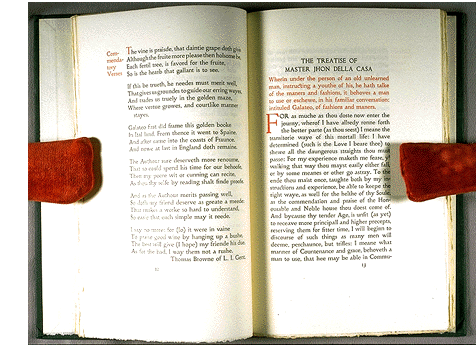
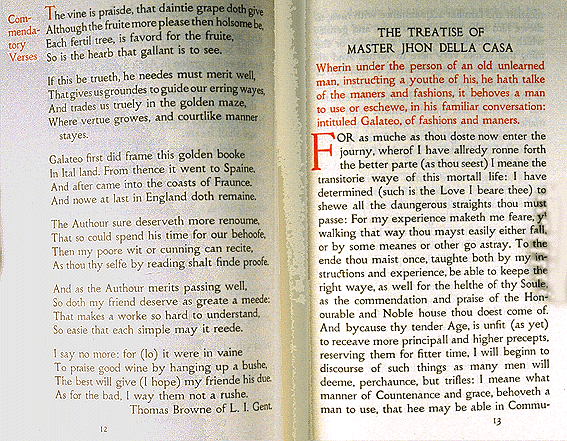
Figure 4. Della Casa, Giovanni (1503-1556). Il Galateo, The arts of grandeur and submission, or, A discourse concerning the behavior of great men towards their inferiors and of inferior personnages towards men of greater quality. Written in Latin by Joahnnes Casa and rendered into English by Henry Stubbe. [London, Printed by T.J. for William Lee, 1670].
Giovanni Della Casa was a Florentine cleric, and author of a popular Renaissance courtesy book. His work is considered to be more realistic and down-to-earth than Castiglione's Il Cortegiano, as it addresses more mainstream ideas of the whole society rather than the elite. It discusses the ideas relevant to "polite" society rather than narrowing the viewpoint on "courtly" ideals.
Il Cortegiano, "Qualities of a Gentle-woman,"
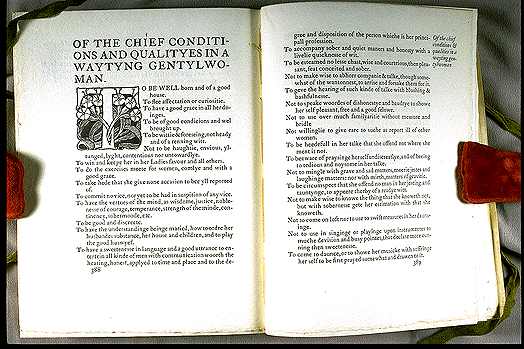

Figure 5. Castiglione, Baladassare (1478-1529). Il Cortegiano, or, The Courtier, c. 1518. [First done into English by Sir Thomas Hoby and now printed in London, E. Arnold, 1900. The work has been edited from the Cambridge University Library copy of the Editio Princeps of 1561 by Janet E. Ashbee]. This is a limited edition of 200 copies.
Choice emblems for Youth
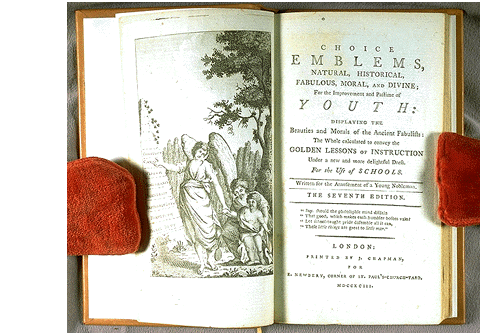
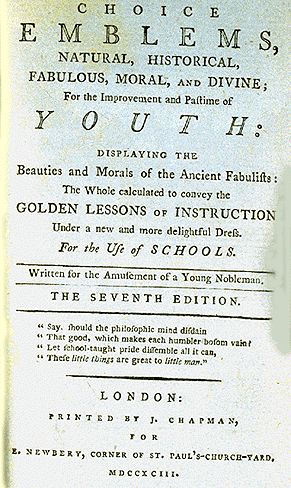
Figure 6. Wynne, John Huddleston (1743-1788). Choice emblems, natural, historical, fabulous, moral, and divine, for the improvement and past-time of youth: displaying the beauties and morals of the ancient fabulists. The whole calculated to convey the golden lessons of instruction under a new and more delightful dress, for the use of schools. Written for the amusement of a young nobleman. [London, Printed by J. Chapman for E. Newbery, 1793].
Wither’s Emblems, two page spread
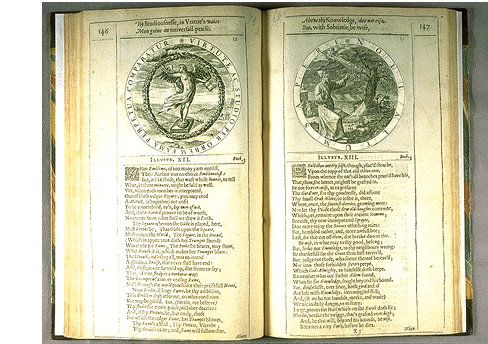
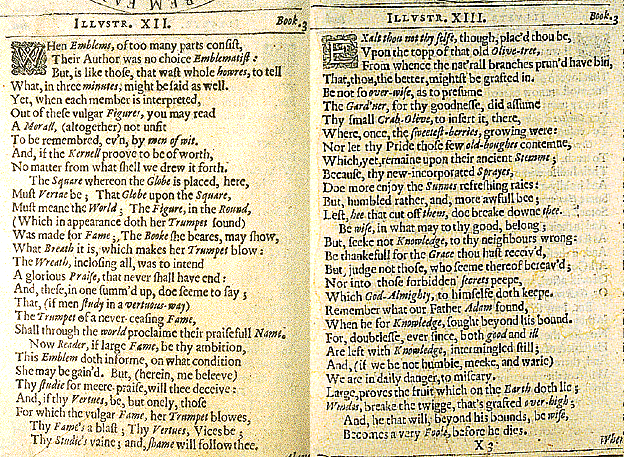
Figure 7. Wither, George (1588-1667). Collection of Emblemes, Ancient and Modern: Quickened with Metricall Illustrations; and, disposed into Lotteries, both Morall and Divine. That Instruction, and Good Counsell, may bee furthered by an Honest and Pleasant Recreation. [London, Printed by Augustine Mathewes, 1634].
An English poet, George Wither was of the Spenserian school of the early seventeenth century. He became a Puritan, and wrote many controversial pamplets, hymns, and psalms.
Emblem Books. Emblems were introduced into European literature by the Emblematum liber (1531) of Andrea Alciati, and remained popular throught the nineteenth century, and to a small devoted circle today. The first English emblem book was by Geoffrey Whitney, The Choice of Emblems (1586), and one of the most notable is by Francis Quarles, Emblemes (1635). Emblems became an instrument of popular education, especially among the Jesuits, during the seventeenth century. They were widely used by painters, sculptors, poets, and writers, such as Spenser, Shakespeare, Donne, and Crashaw.
An emblem is a didactic device, usually, though not always comprised of three parts: 1) a motto, or proverb, or phrase; 2) a poem, epigram, or sonnet; and 3) an illustration or image, usually an allegory or personnification. The illustration is generally referred to as the cor (heart) and the poetry as the anima (soul). The popularity of emblems and emblem books was enhanced by increased technology in paper manufacture, printing and engraving, and book production. They had a strong influence on poets' and painters' use of subject matter, and imitation and replication are widespread.
Scholia Cordis, Christopher Harvey
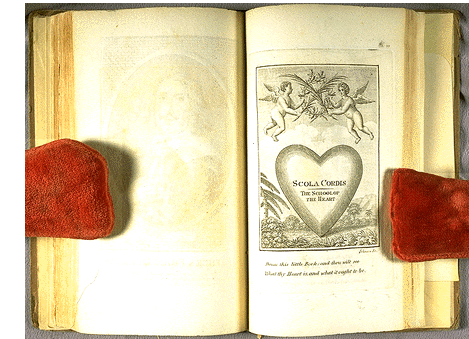
Figure 8. Harvey, Christopher. The school of the Heart, or, The Heart of itself gone away from God, brought back to him, and instructed by forty-seven emblems, whereon is added, The Learning of the Heart. [London, Printed and sold by H. Trapp, No. 1, Paternoster-Row, 1778].
Erroneously ascribed to Francis Quarles; adapted from Benedictus van Haeften's Schola Cordis, and published anonymously under that title in 1647; the third edition, 1675, attributes the work to the "author of the Synagogue" i.e. Christopher Harvey.
I. Learning of the Heart,
II. Grammar of the Heart,
III. Rhetoric of the Heart,
IV. Logic of the Heart.
Learning of the Heart (Scholia Cordis, text)
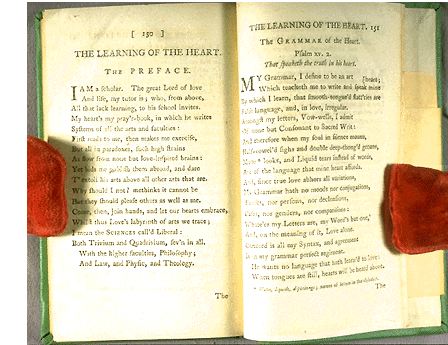

Figure 9. Harvey, Christopher. The school of the Heart, or, The Heart of itself gone away from God, brought back to him, and instructed by forty-seven emblems, whereon is added, The Learning of the Heart. [London, Printed and sold by H. Trapp, No. 1, Paternoster-Row, 1778].
Figure 8 and Figure 9 ( in case 5) are duplicate copies of the same edition. In the exhibition, Figure 8 serves to illustrate the image, while Figure 9 depicts the text of "The Learning of the Heart."
Hornbook, leather
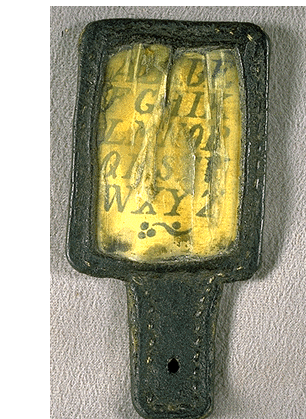
Figure 10. Hornbook. A seventeenth century hornbook. The frame is made of 17th century calf-leather, and measures 6 x 4 1/2 cm. The handle measures 3 cm long. The frame is stitched at the edge all the way around, with the alphabet in italic capitals and a fleuron beneath a covering of horn.
Hornbooks. Although exact knowledge about medieval pedagogical techniques is sketchy, it is fairly certain that by the fourteenth century alphabetical instruction for children had been standardized. The alphabet would be presented in various ways, for example, painted on a whitewashed wall of a church or building that served as a classroom, or, written on parchment, affixed to a wooden board, or a tablet, such as a hornbook.
Produced primarily during the sixteenth and seventeenth centuries, hornbooks were covered with a layer of translucent horn to protect them against grubby hands and other threatening elements of nature. Used in conjunction with other preliminary foundational textbooks or primers, (prevalent since the thirteenth century, and used for teaching Latin and vernacular languages) along with the alphabet they might contain the Lord's Prayer, the Ten Commandments, Proverbs, Psalms, and various moral maxims fundamental to daily worship.
Hornbook, velvet
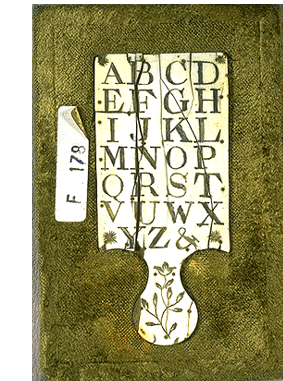
Figure 11. Hornbook. A seventeenth century hornbook measuring 11 x 5 cm, made of ivory with ebony letters,and laid on a moss-green velvet covered board. The board measures 14 1/2 x 10 1/2 cm.
Hornbooks. Although exact knowledge about medieval pedagogical techniques is sketchy, it is fairly certain that by the fourteenth century alphabetical instruction for children had been standardized. The alphabet would be presented in various ways, for example, painted on a whitewashed wall of a church or building that served as a classroom, or, written on parchment, affixed to a wooden board, or a tablet, such as a hornbook.
Produced primarily during the sixteenth and seventeenth centuries, hornbooks were covered with a layer of translucent horn to protect them against grubby hands and other threatening elements of nature. Used in conjunction with other preliminary foundational textbooks or primers, (prevalent since the thirteenth century, and used for teaching Latin and vernacular languages) along with the alphabet they might contain the Lord's Prayer, the Ten Commandments, Proverbs, Psalms, and various moral maxims fundamental to daily worship.